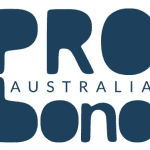Safeguarding LGBTIQ+ children and young people

15 April 2021 at 7:00 am
LGBTIQ+ children and young people are disproportionately impacted by stigma and discrimination and their mental health is suffering as a result. Organisations must do their part to create safety, writes Michael MacKay.
Recently, the Productivity Commission published its Inquiry Report into Mental Health. Among other findings, the report acknowledged the poorer mental health outcomes of lesbian, gay, bisexual, transgender, intersex and queer (LGBTIQ) communities due to factors including, “…stigma, discrimination, social exclusion, homophobia, transphobia, stereotyping, ostracising and harassment”.
According to LGBTIQ+ Health Australia, when compared to the general population:
- LGBTI young people aged 16 to 27 are five times more likely to attempt suicide in their lifetime;
- transgender people aged 18 and over are nearly 11 times more likely; and
- people with an intersex variation aged 16 and over, are nearly six times more likely.
Let’s just let those numbers sink in for a second.
This data is staggering, and speaks to the discrimination, violence and prejudice that LGBTIQ+ children and young people continue to face.
To be clear, poorer mental health outcomes for LGBTIQ+ people are not related to identity; they’re related to stigma, abuse and violence, as well as the minority stress caused by living in a world that excludes you and leads you to feel invisible. This data shines a light on the responsibility that organisations have in creating safe, nurturing and welcoming environments for LGBTIQ+ children and young people.
Principle 4 of the National Principles for Child Safe Organisations requires that: “Equity is upheld and diverse needs respected in policy and practice”. The national principles were established as a framework to guide organisations in fostering safe environments for all children and young people, and Principle 4 reminds us that equity is essential to effective safeguarding; it can’t be just an aspirational idea, sentiment or promise.
An environment which is not equitable risks the safety of all children and young people – not just those who are LGBTIQ+; it also impacts families and the wider community. Not only are people more exposed to prejudicial, discriminatory and violent behaviour, but they will be less likely to see the organisation as a safe place to speak up about other concerns they have, including abuse of all forms.
What must leaders do to create safety for LGBTIQ children and young people?
It’s no longer enough for organisations to say that everyone is welcome, valued and treated “the same”, and think that that is a sufficient response to Principle 4. Leaders must now step up and take proactive, meaningful and tangible action to demonstrate they are committed to the safety, inclusion and affirmation of LGBTIQ+ children and young people impacted by the work of their organisations.
Here are some ideas for building inclusive organisational culture:
- State your commitment in policy. Make it clear that yours is an organisation dedicated to the emotional, psychological and physical safety of LGBTIQ+ children and young people, and their families. And communicate this loudly and proudly in ways that everyone can understand.
- Tackle bullying at all levels of your organisation. Child Wise regularly talks to children and young people about safety and we hear time and again that bullying is a major worry. Homophobic and transphobic bullying is rife in organisations. According to Australian research, 61 per cent of same-gender attracted young people have experienced homophobic verbal abuse, and 18 per cent experienced homophobic physical abuse, with 80 per cent of the abuse reported to have happened in schools. Adults in organisations who fail to address bullying are complicit. Organisations must make it clear that bullying will not be tolerated, and adults must nurture a culture where bullying is not only challenged, but seen as abhorrent by everyone.
- Don’t stop at acceptance. Aim for support, appreciation, celebration and nurturing. Dr Dorothy Riddle, an American-Canadian psychologist, developed the Riddle Scale of Homophobia. Amongst other things, the scale taught us that to really challenge stigma, society mustn’t stop at tolerance or acceptance but strive to do better. Organisations that are truly committed to the safeguarding of LGBTIQ+ children and young people will be aiming to not merely “accept” them, but to support, appreciate and nurture them, seeing their diversity as something to celebrate.
- Ensure access to inclusive, affirming supports. This may involve establishing referral pathways to LGBTIQ+ specialist services, developing internal support services, as well as training staff and volunteers in LGBTIQ+ affirmative practice. It may also involve supporting children and young people to develop LGBTIQ+ peer support groups and activities.
- Measure, benchmark and report on inclusion to uphold accountability and get feedback on the initiatives being undertaken.
These are just some of the ways leaders can strive to create safety for LGBTIQ children and young people. Building child safe capacity is a challenging and continuous journey but one that undoubtedly starts with acknowledging learning edges and committing to making things better.
Child Wise is an organisation which supports public, private and not-for-profit organisations to build child safe cultures and environments. Visit us at www.childwise.org.au for information on how we may be able to help.
Child Wise also encourages organisations to get in touch with the following services for information on building safe and inclusive environments for LGBTIQ communities, and how to measure your inclusion journey.
Michael MacKay is the director of quality safeguarding at Child Wise.







